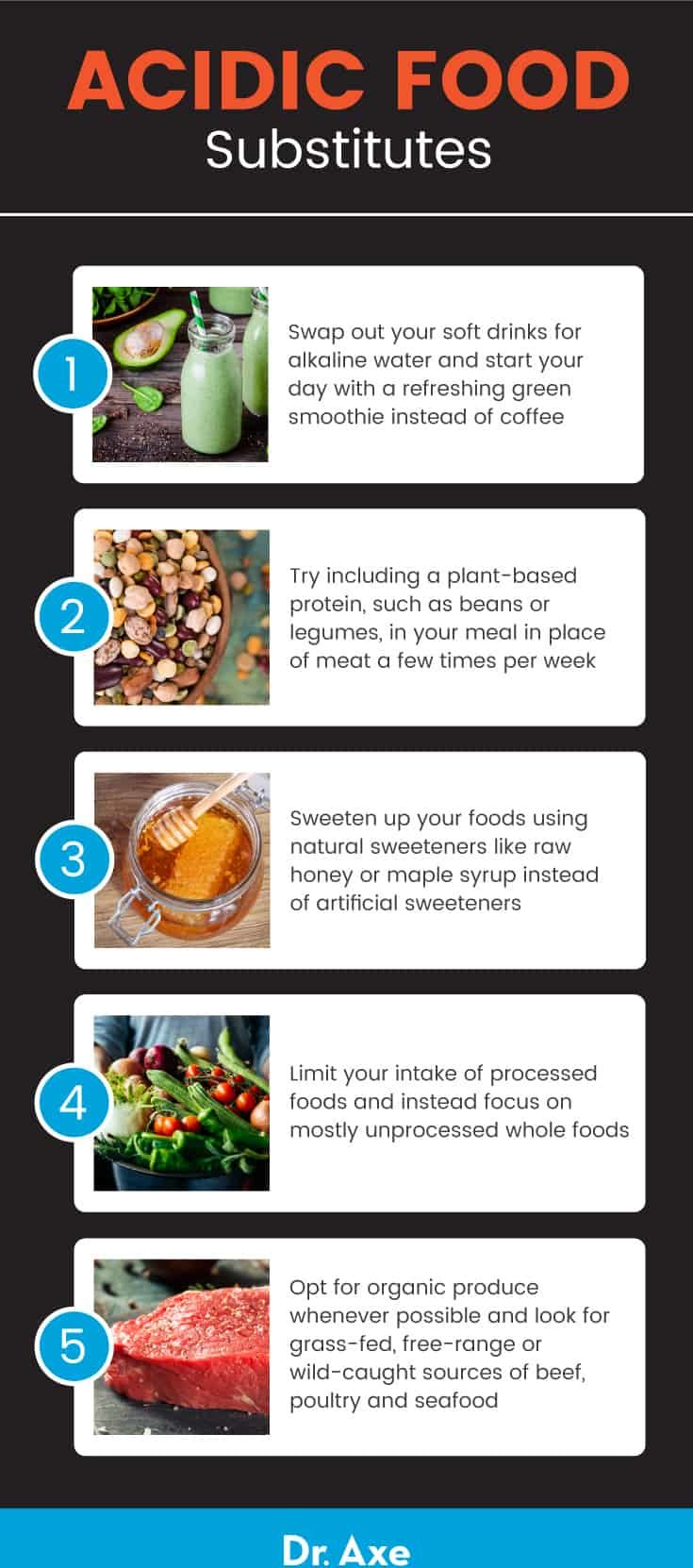This Dr. Axe content is medically reviewed or fact checked to ensure factually accurate information.
With strict editorial sourcing guidelines, we only link to academic research institutions, reputable media sites and, when research is available, medically peer-reviewed studies. Note that the numbers in parentheses (1, 2, etc.) are clickable links to these studies.
The information in our articles is NOT intended to replace a one-on-one relationship with a qualified health care professional and is not intended as medical advice.
This article is based on scientific evidence, written by experts and fact checked by our trained editorial staff. Note that the numbers in parentheses (1, 2, etc.) are clickable links to medically peer-reviewed studies.
Our team includes licensed nutritionists and dietitians, certified health education specialists, as well as certified strength and conditioning specialists, personal trainers and corrective exercise specialists. Our team aims to be not only thorough with its research, but also objective and unbiased.
The information in our articles is NOT intended to replace a one-on-one relationship with a qualified health care professional and is not intended as medical advice.
25 Acidic Foods to Avoid and Healthier Alternatives
January 27, 2021

The alkaline diet has been in the limelight recently, with everyone from celebrities to health gurus touting the benefits of cutting acidic foods out of your diet.
Studies show that limiting your intake of acidic foods may help improve bone strength, reduce the risk of kidney stones, lower chronic pain, improve hormone levels and alleviate acid reflux as part of an acid reflux diet.
Following a healthy diet full of nutrient-rich, unprocessed foods and reducing your intake of a few of the most acidic foods can be a great way to help you make strides toward achieving optimal health.
So are strawberries acidic? Is rice acidic, and where exactly do your other favorite foods fall on the pH chart? Read on to find out.
What Are Acidic Foods?
Your body maintains a tightly regulated pH level. This is a measure of acidity and alkalinity in the fluids and tissues of the body that is based on a scale from 0 to 14.
A lower pH level is more acidic, and higher pH levels are considered more alkaline. While a pH of 7 is neutral, a slightly alkaline pH of 7.35–7.45 is considered optimal for human health.
Even minute changes in your body’s pH levels can cause a major impact on health. Alkalosis, which is caused by a high pH level, can cause symptoms like confusion, muscle twitching and nausea, while acidosis can result in fatigue, shallow breathing and headaches.
Luckily, your kidneys do most of the work in controlling your body’s pH by maintaining electrolyte levels and excreting/reabsorbing acidic and alkaline ions through the urine. However, eating a diet high in alkaline foods may come with some benefits to health.
Limiting your intake of acidic foods could help preserve bone strength, prevent kidney stones and even decrease acid reflux symptoms.
Related: What Is Key Lime? Benefits, Uses, Recipes & More
Acidic Foods to Limit or Avoid
Here’s a quick list of the top 25 most acidic foods that you may want to limit. These foods are considered acid-forming, and their intake by people should be moderated on a healthy diet:
- Convenience meals
- Alcohol
- Milk
- Caffeinated drinks
- Processed cereals
- Pizza
- Artificial sweeteners
- Peanuts
- Cheese
- Pasta
- Rice
- Bread
- Wheat products
- Butter
- Cold cuts
- Refined vegetable oils
- French fries
- Hot chocolate
- Red meat
- Sports drinks
- Table sugar
- Corn syrup
- Pancakes
- Fried foods
- Soda
Keep in mind that not all acidic foods should be eliminated from the diet completely. Some ingredients on the acidic foods chart provide important nutrients and can be included in moderation as part of a healthy diet.
Most types of meat, for example, are considered to have high acidity but supply many important vitamins and minerals to the diet. They can also help you meet your daily protein needs to improve the health of your cells and muscles.
Walnuts nutrition is also considered high in acidity but is rich in antioxidants and omega-3 fatty acids, which can reduce inflammation and promote better health. Other healthy foods that are classified in this group include oats, eggs, whole grains, and citrus fruits like lemons, limes and oranges.
The key is to include these acidic foods as part of a healthy, whole food diet in combination with plenty of fruits with low acidity, vegetables and plant-based proteins as well.
Acidic vs. Alkaline Foods
So how exactly is the list of acidic and alkaline food groups determined?
When you eat, the calories and nutrients are extracted from foods, and they are metabolized, leaving behind an ash residue. This ash residue is what determines the pH of your food, separating it into either an acid-forming or alkalinizing food.
Acid-forming foods typically include animal proteins like meats, eggs, poultry, fish and milk products, as well as grains and alcoholic beverages. Meanwhile, fruits, vegetables and plant-based protein foods are generally considered alkalinizing, or non-acidic foods.
Side Effects and Dangers
There are plenty of reasons people may want to cut back on your consumption of acidic foods. Here are a few of the top side effects to consider.
1. Lower Bone Density
Some research has found that a diet rich in acid-forming foods could increase the amount of calcium lost through the urine, leading to a decline in bone density and a higher risk of osteoporosis.
One study published in the journal Osteoporosis International out of Switzerland gave participants either an acidic or alkaline diet and showed that the acidic diet increased the amount of calcium excreted through the urine by 74 percent. Another study showed that men with low intake of calcium and a diet high in acidic foods were more likely to have lower bone mineral density.
The pH of milk is slightly high on the acid scale, but there are many other sources of calcium available to promote healthy bones and teeth. Vegetables like kale, broccoli and spinach are all good, non-dairy calcium-rich foods.
2. Exacerbate Acid Reflux
Acid reflux, also known as gastroesophageal reflux disease or GERD, is a condition in which acid from the stomach flows back up to the esophagus, causing symptoms like heartburn and chest pain.
When working correctly, the esophagus has a band of muscles known as the sphincters that close to prevent this back flow and keep acid in the stomach. However, with GERD, these esophageal sphincters are often weakened or damaged and unable to work efficiently.
Many acidic foods can contribute to acid reflux by relaxing the esophageal sphincter and allowing acid to splash up. Caffeinated drinks, alcohol and high-fat foods, for instance, are common triggers for acid reflux.
Meanwhile, alkaline foods, such as vegetables and non-citrus fruits, are considered foods that reduce stomach acid, which may help decrease symptoms. Additionally, balancing your blood pH to neutralize stomach acid, eating smaller meals and making healthy lifestyle changes can all alleviate acid reflux as well.
3. Can Cause Kidney Stones
The foods that you eat can have a big effect on the blood pH of your urine. When you eat more acidic foods, the blood pH of your urine is more likely to higher in acid.
Eating lots of non-acid foods, on the other hand, is more likely to result in an alkaline pH.
Having an acidic pH in your urine increases the risk of developing uric acid or cystine kidney stones, which are small mineral deposits that form in your kidneys and often must be surgically removed or passed through the urinary tract.
When you have kidney stones, limiting your intake of acidic foods, such as animal proteins and soft drinks, may help.
Additionally, drinking more water, reducing your salt intake and avoiding foods rich in oxalate, an antinutrient that can contribute to kidney stone formation, may also help reduce your risk.
4. Contribute to Chronic Pain
Some acidic foods that cause inflammation could also contribute to chronic pain. In fact, acidosis has been linked to symptoms like muscle spasms, headaches and chronic back pain.
A study out of Germany supplemented 82 participants with chronic back pain with alkaline minerals. After four weeks, symptoms were reduced in 92 percent of participants.
Further research has found that a whole-foods, plant-based diet similar to the alkaline diet could help reduce symptoms of osteoarthritis.
Following a healthy diet, getting in plenty of physical activity and incorporating some natural painkillers into your daily routine could also help alleviate chronic pain.
5. Alter Hormone Levels
Research published in the European Journal of Nutrition out of the University of California shows that acidosis could lead to decreased levels of human growth hormone (HGH) in the blood. HGH is a hormone that is produced in the pituitary gland and is responsible for stimulating cell regeneration and growth.
A study published in the Journal of Clinical Investigation evaluated growth in a group of 10 children and infants with familial or idiopathic classic renal tubular acidosis. Alkali therapy was initiated at ages ranging from eight days to 9.5 years to evaluate the results on growth over four prolonged observation periods.
Six of the patients had stunted growth at the start of the study, while two were too young to have stunted growth and the other two were nonacidotic.
The researchers found that with sustained alkali therapy:
(a) each patient attained and maintained normal stature; (b) the mean height of the 10 patients increased from the 1.4+/-4 to the 37.0+/-33 percentile (of a normal age- and sex-matched population); (c) the mean height reached the 69th percentile in the eight patients whose heights could be analyzed according to parental prediction (Tanner technique); (d) the rate of growth increased two- to threefold, and normal heights were attained within 6 mo of initiating alkali therapy in the stunted infants and within 3 yr in the stunted children; (e) the height attained correlated inversely with the maximal possible duration of acidosis (before alkali therapy) only in those patients in whom alkali therapy was started after 6 mo of age, and not in those treated earlier.
In addition to promoting growth and proper development, growth hormone may also reduce heart disease risk factors, improve body composition, and enhance memory and cognition.
Healthy Alternatives
Following a low-acid diet can be as simple as making a few simple substitutes and trading out unhealthy ingredients for a few of the top alkaline foods instead.
Here are a few ideas for easy exchanges you can make to increase your intake of low-acid foods:
- Swap out your soft drinks for alkaline water, and start your day with a refreshing green smoothie instead of coffee.
- Try including a plant-based protein, such as beans or legumes, in your meal in place of meat a few times per week.
- Sweeten up your foods using natural sweeteners like raw honey or maple syrup instead of artificial sweeteners.
- Limit your intake of processed foods and instead focus on mostly unprocessed whole foods.
- Opt for organic produce whenever possible, and look for grass-fed, free-range or wild-caught sources of beef, poultry and seafood.
Ready to revamp your recipe collection and start improving your health? They key is to look for recipes that are made up of mostly alkaline foods like fruits and vegetables with minimal amounts of acidic foods.
Here are some recipes that you can try at home:
- Salmon Kale Salad
- Berry Oat Breakfast Smoothie
- Quick & Easy Pesto Chicken
- Apple Walnut Salad with Balsamic Vinaigrette
- Buddha Bowl with Flank Steak and Cashew Sauce

Final Thoughts
- Acidic foods are foods with a low pH that can decrease the blood pH of the urine.
- Some research has found that regular consumption of acidic foods may contribute to kidney stones, low bone density, acid reflux, chronic pain and altered hormone levels.
- A few ingredients on the acidic foods chart include dairy products, processed cereals and artificial sweeteners, among others.
- However, some high-acid foods are healthy and OK to include as part of a healthy, well-balanced diet, including oats, walnuts, eggs and meat.
- Aim for minimal amounts of processed foods, and include plenty of fruits, vegetables and whole foods in your diet to help achieve better health and improve overall quality of life.

